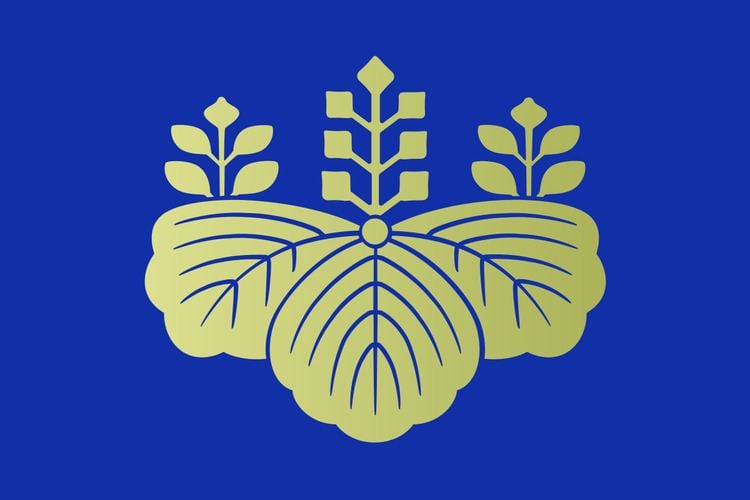Coronation 1036 Parents Emperor Ichijo Predecessor Go-Ichijo Name Emperor Go-Suzaku Children Emperor Go-Reizei | Successor Go-Rezei Role Sovereign Grandparents Emperor En'yu Father Ichijo | |
 | ||
Burial Enjo-ji no misasagi (円乗寺陵) (Kyoto) Died February 7, 1045, Heian-kyo Similar People Fujiwara no Yorimichi, Emperor Go‑Kameyama, Emperor Murakami, Empress Go‑Sakuramachi | ||
Emperor Go-Suzaku (後朱雀天皇, Go-Suzaku-tennō, December 14, 1009 – February 7, 1045) was the 69th emperor of Japan, according to the traditional order of succession.
Contents
- Traditional narrative
- Events of Go Suzakus life
- Kugy
- Eras of Go Suzakus reign
- Consorts and children
- References
Go-Suzaku's reign spanned the years from 1036 through 1045.
This 11th-century sovereign was named after the 10th-century Emperor Suzaku and go- (後), translates literally as "later;" and thus, he is sometimes called the "Later Emperor Suzaku". The Japanese word "go" has also been translated to mean the "second one;" and in some older sources, this emperor may be identified as "Suzaku, the second" or as "Suzaku II."
Traditional narrative
Before his ascension to the Chrysanthemum Throne, his personal name (his imina) was Atsunaga-shinnō (敦良親王).
His father was Emperor Ichijō. His mother was Fujiwara no Akiko/Shōshi (藤原彰子), the daughter of Fujiwara no Michinaga (藤原道長). He was the younger brother and heir to Emperor Go-Ichijō.
Go-Suzaku had five Empresses and seven Imperial children.
Events of Go-Suzaku's life
The actual site of Go-Suzaku's grave is known. This emperor is traditionally venerated at a memorial Shinto shrine (misasagi) at Kyoto.
The Imperial Household Agency designates this location as Go-Suzaku's mausoleum. It is formally named Enjō-ji no misasagi.
Go-Suzaku is buried amongst the "Seven Imperial Tombs" at Ryoan-ji Temple in Kyoto.
The specific mound which commemorates the Hosokawa Emperor Go-Suzaku is today named Shu-zan.
The emperor's burial place would have been quite humble in the period after Go-Suzaku died.
These tombs reached their present state as a result of the 19th century restoration of imperial sepulchers (misasagi) which were ordered by Emperor Meiji.
The final resting place of Emperor Go-Suzaku's consort, Teishi Nai-shinnō (1013–1094), is here as well.
Kugyō
Kugyō (公卿) is a collective term for the very few most powerful men attached to the court of the Emperor of Japan in pre-Meiji eras. Even during those years in which the court's actual influence outside the palace walls was minimal, the hierarchic organization persisted.
In general, this elite group included only three to four men at a time. These were hereditary courtiers whose experience and background would have brought them to the pinnacle of a life's career. During Go-Suzaku's reign, this apex of the Daijō-kan included:
Eras of Go-Suzaku's reign
The years of Go-Suzaku's reign are more specifically identified by more than one era name or nengō.
Consorts and children
Crown Princess (died before Emperor's accession): Fujiwara no Yoshiko/Kishi (藤原嬉子), 4th daughter of Fujiwara no Michinaga
Empress (kōgō): Imperial Princess Sadako/Teishi (禎子内親王) (1013–1094), 3rd daughter of Emperor Sanjō
Empress (chūgū): Fujiwara no Motoko/Genshi (藤原嫄子) (1016–1039), adopted daughter of Fujiwara no Yorimichi (biological daughter of Imperial Prince Atsuyasu (敦康親王))
Nyōgo: Fujiwara no Nariko/Seishi (藤原生子) (1014–1068), eldest daughter of Fujiwara no Norimichi (藤原教通)
Nyōgo: Fujiwara no Nobuko/Enshi (藤原延子) (1016–1095), 2nd daughter of Fujiwara no Yorimune (藤原頼宗)
